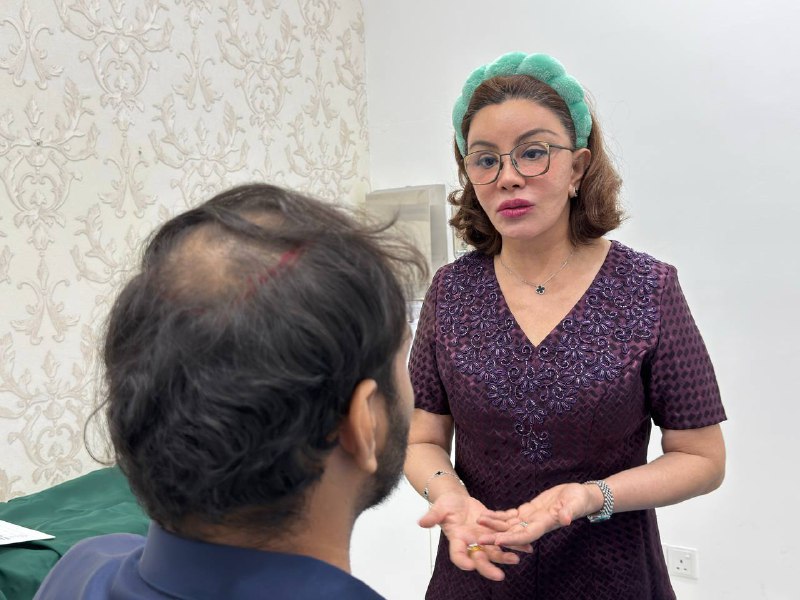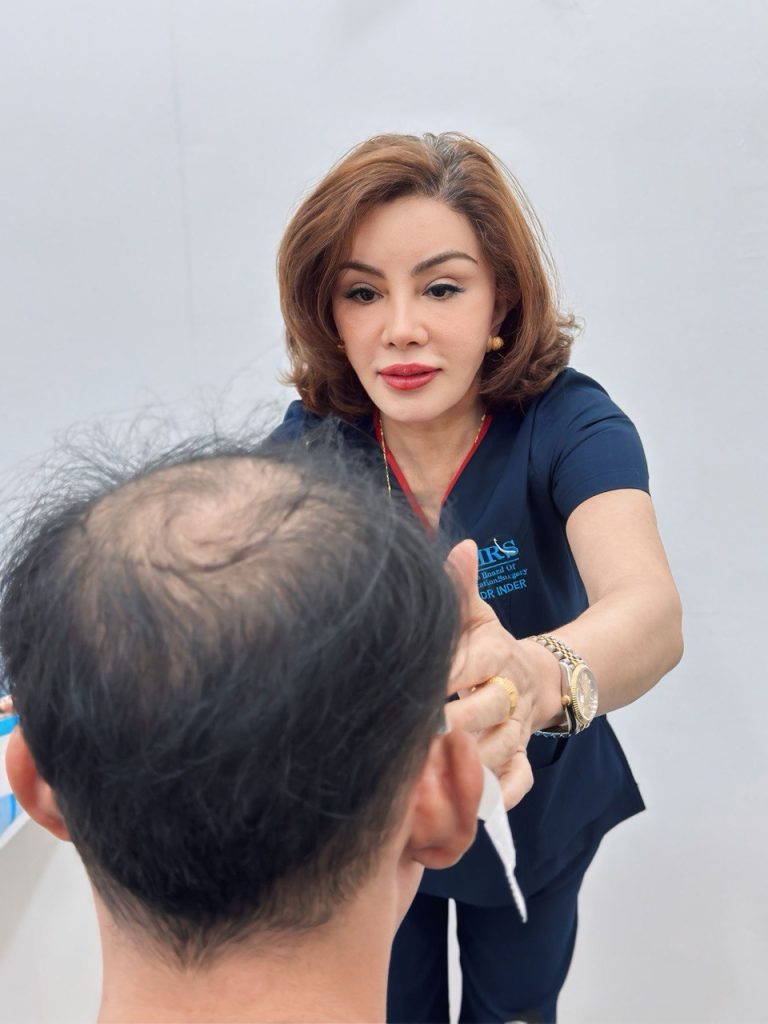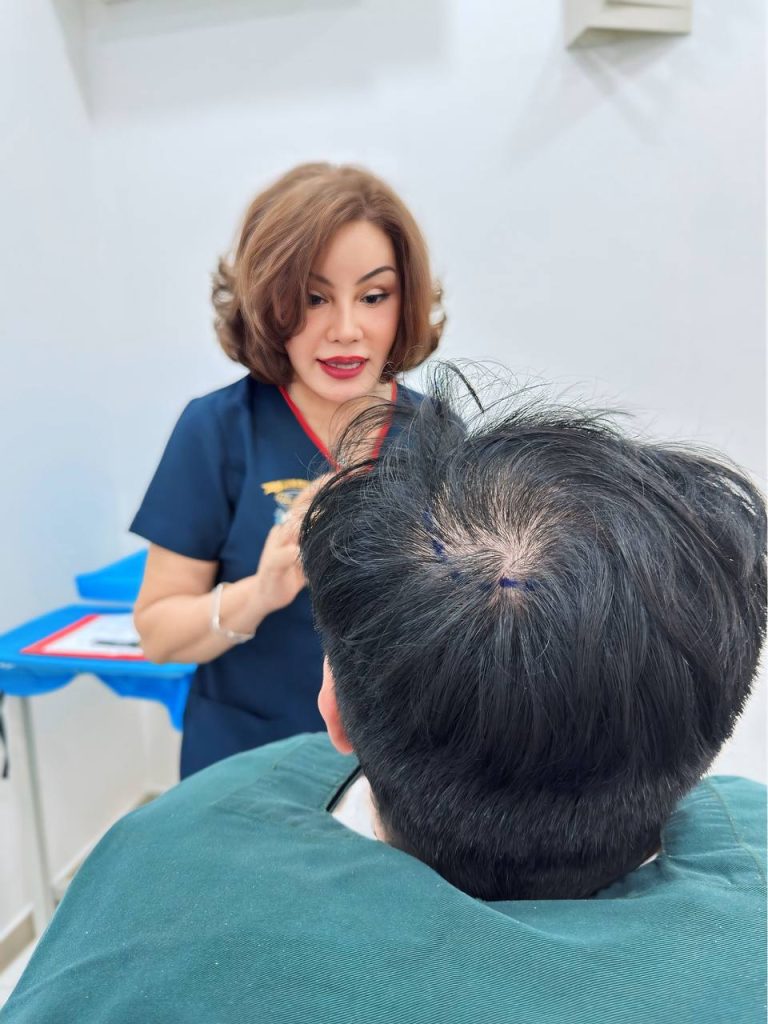Crown Hair Transplant
- Home
- Crown Hair Transplant

What Is a Crown Hair Transplant?
A crown hair transplant is a surgical procedure designed to restore density and coverage in the crown region of the scalp. It involves extracting healthy hair follicles (usually from the back or sides of the head) and implanting them into thinning areas of the crown.
Crown Hair Transplant: An Effective Solution for Female Hair Loss
Hair loss is a widespread concern that affects both men and women, but for women, the impact often feels far more personal and emotionally challenging. While thinning hair can occur in many areas of the scalp, one of the most distressing regions is the crown area—the top and back portion of the head that is highly visible.
For many women, diffuse hair thinning or noticeable crown hair loss can damage confidence and self-esteem. Fortunately, modern treatments such as a crown hair transplant offer effective, long-term solutions. This comprehensive guide will cover the causes of crown hair loss in women, treatment options, the transplant process, and FAQs to help you make informed decisions.
Why Does Hair Loss Happen in the Crown Area for Males and Females?
Hair loss in the crown area is common in both men and women due to hormonal changes, genetics, and reduced blood circulation in that region. In men, it’s often caused by androgenetic alopecia (male pattern baldness), where hair follicles in the crown become sensitive to DHT (a hormone), leading to gradual thinning and eventual hair loss.
For women, female pattern hair loss also targets the crown area, typically resulting in diffuse thinning rather than complete bald spots. Other contributing factors include stress, poor nutrition, scalp conditions, and hormonal imbalances (such as during menopause or thyroid issues).
Since the crown area has fewer oil glands and weaker blood flow, hair follicles there may not receive enough nutrients, making it more prone to thinning. Early treatment and proper hair care routines can slow down the process and even encourage regrowth.
Benefits of Crown Hair Transplant
Natural Results: The transplanted hair blends seamlessly with your existing hair.
Permanent Solution: Unlike topical treatments, transplanted follicles are resistant to thinning.
Improved Confidence: Restoring crown volume can drastically improve appearance and self-esteem.
Low Maintenance: Once healed, transplanted hair can be treated like natural hair.
Common Causes of Crown Hair Thinning in Women
Genetics (Hereditary Hair Loss):
Family history plays a major role. If your mother, grandmother, or other relatives experienced crown thinning, you may be predisposed.
2. Hormonal Imbalances
Events like pregnancy, menopause, and thyroid imbalances can accelerate hair loss in the crown region.
3. Medical Conditions:
Conditions such as PCOS, anemia, or scalp disorders can contribute to localized thinning.
4. Lifestyle Factors:
Poor nutrition, stress, and use of harsh hair treatments can weaken follicles over time.
Popular Services
Book Appoinment
Make a call for any type of query.
0829488372577

Who Is a Good Candidate for Crown Hair Transplant?
- A crown hair transplant may be suitable if you:
- Have significant crown thinning that affects your confidence.
- Possess enough healthy donor hair for transplantation.
- Are in good overall health with no severe scalp infections.
- Understand that results take time (up to 12 months) for full growth.

Crown Hair Transplant Procedure: Step by Step
- A trichologist or surgeon evaluates your hair loss pattern, scalp health, and donor area suitability.
- Donor Hair Extraction: Healthy follicles are taken from the donor site
- Preparation of Crown Area: Tiny incisions are made in the crown for precise follicle placement.
- Implantation of Follicles: Follicles are inserted carefully to match the natural growth pattern.
- Recovery & Growth: Initial healing takes 1–2 weeks. New hair growth begins after 3–4 months, with full results visible within 12 months.

Recovery and Aftercare
- Avoid heavy exercise and sweating for the first 1–2 weeks.
- Sleep with your head elevated to minimize swelling
- Follow your doctor’s scalp cleaning instructions carefully.
- Avoid coloring, heat styling, or tight hairstyles until fully healed.
- Attend follow-up checkups to monitor growth progress.
FAQs About Crown Hair Transplant
Q1: Is a crown hair transplant painful?
Most patients experience minimal discomfort thanks to local anesthesia. Mild soreness may occur during recovery.
Q2: How long does it take to see results?
Initial shedding of transplanted hair occurs within weeks. Visible regrowth begins around 3–4 months, with full results in 9–12 months.
Q3: Are results permanent?
Yes, transplanted follicles are resistant to thinning, providing long-lasting results. However, existing hair may continue to thin, so maintenance treatments may be required.
Q4: Can women of all ages undergo crown hair transplant?
Most clinics recommend waiting until at least the mid-20s, when hair loss patterns stabilize. Women in their 30s, 40s, and beyond often see excellent results.
Q5: How much does a crown hair transplant cost?
Costs vary depending on the number of grafts, clinic reputation, and location. On average, crown transplants are slightly more expensive because they require higher follicle density.
Final Thoughts
Crown hair loss in women is a distressing but common issue. For those who struggle with thinning at the crown, a crown hair transplant can provide a permanent, natural-looking solution. By understanding the causes, treatment options, and process, women can take control of their hair health and regain their confidence.
If you’re experiencing crown hair thinning, consult a qualified hair restoration specialist to explore whether a crown transplant or alternative treatments are best suited for you. Early action often leads to the best outcomes.
